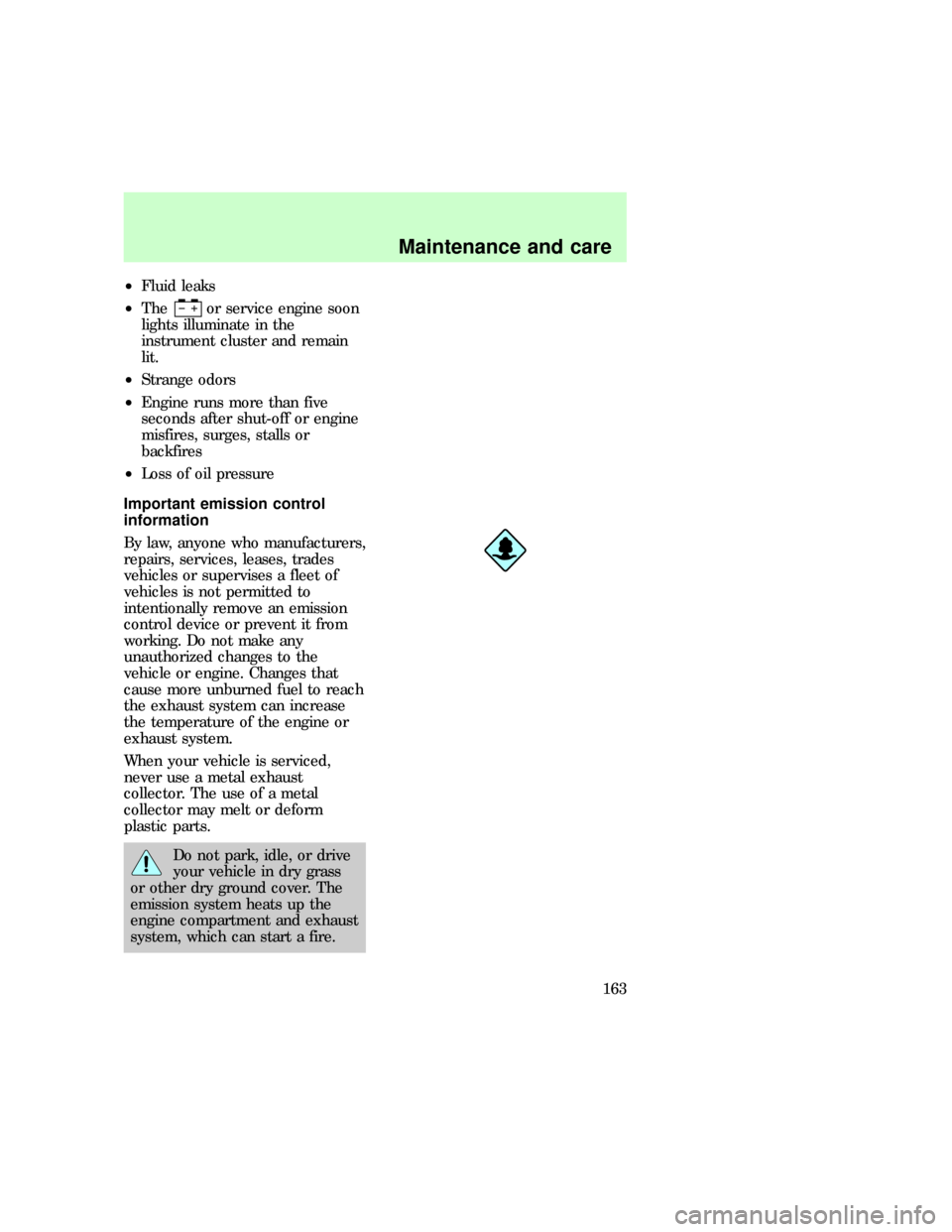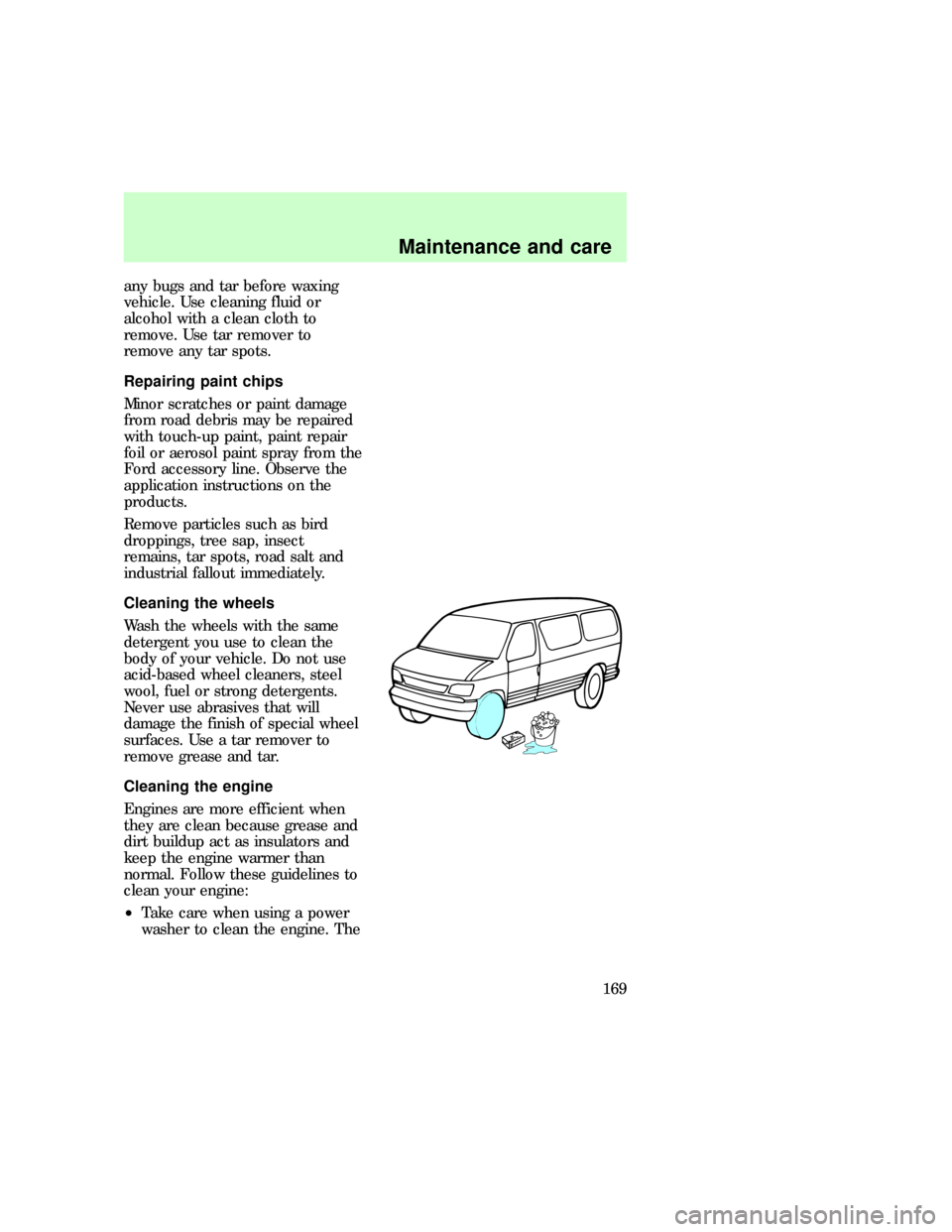Page 131 of 192
Checking the engine oil
Check the engine oil each time you
fuel your vehicle.
To check the oil:
1. Make sure the vehicle is on level
ground. If the engine is warm, turn
the engine off and wait a few
minutes for the oil to drain into
the oil pan.
2. Set the parking brake and
ensure the gearshift is securely
latched in P (Park).
3. Open the hood. Protect yourself
from engine heat.
4. Locate and carefully remove the
engine oil dipstick.
4.2L/4.6L engines
ADDFULL
Maintenance and care
131
Page 132 of 192
5.4L/6.8L engines
5. Wipe the dipstick clean. Insert
the dipstick fully, then remove it
again. The oil level should be in
the range shown on the dipstick.
6. If the oil level is below the ADD
or MIN line, add engine oil as
necessary. If the oil level is beyond
the FULL or MAX line, engine
damage or high oil consumption
may occur and some oil must be
removed from the engine by a
service technician.
7. Put the dipstick back in and
ensure it is fully seated.
MIN MIN
com_adding_engine_oil.01
Maintenance and care
132
Page 133 of 192
Adding engine oil
1. Check the engine oil. For
instructions, refer toChecking the
engine oilin this chapter.
2. If the fluid level is not within
the normal range, add only
certified engine oil of the preferred
viscosity. Add engine oil through
the oil filler cap. Remove the filler
cap and use a funnel to pour oil in
the opening.
3. Recheck the oil level. Make sure
the oil level is not above the full
mark on the dipstick.
Continuous contact with
usedmotor oil has caused
cancer in laboratory mice.
Changing the engine oil and
filter
Change your engine oil and filter
according to the following
kilometers (mileage) and time
requirements, whichever occurs
first:
²Normal Schedule ± 8,000 km
(5,000 miles) or six months.
²Severe Duty Schedule ± 5,000
km (3,000 miles) or three
months. Severe duty operation
would include extensive idling,
trailer towing, driving in severe
dust and police, taxi or delivery
service.
com_oil_and_filter_change.01
Maintenance and care
133
Page 134 of 192
Ford production and aftermarket
(Motorcraft) oil filters are designed
for added engine protection and
long life. If a replacement oil filter
is used that does not meet Ford
material and design specifications,
startup engine noises or knock
may be experienced.
It is recommended you use the
appropriate Motorcraft oil filter (or
another brand meeting Ford
specifications) for your engine
application.
CHECKING AND ADDING
BRAKE FLUID
Brake fluid should be checked and
refilled as needed at least once
each year:
²Clean the reservoir cap before
removal to prevent dirt or water
from entering the reservoir.
²Visually inspect the fluid level.
²If necessary, add brake fluid
until the level reaches MAX. Do
not fill above this line.
²Use only a DOT 3 brake fluid
certified to meet Ford
specifications. Refer to
Lubricant specificationsin the
Capacities and specifications
chapter.
Brake fluid is toxic.
com_checking-adding_fluid.01
Maintenance and care
134
Page 163 of 192

²Fluid leaks
²The
or service engine soon
lights illuminate in the
instrument cluster and remain
lit.
²Strange odors
²Engine runs more than five
seconds after shut-off or engine
misfires, surges, stalls or
backfires
²Loss of oil pressure
Important emission control
information
By law, anyone who manufacturers,
repairs, services, leases, trades
vehicles or supervises a fleet of
vehicles is not permitted to
intentionally remove an emission
control device or prevent it from
working. Do not make any
unauthorized changes to the
vehicle or engine. Changes that
cause more unburned fuel to reach
the exhaust system can increase
the temperature of the engine or
exhaust system.
When your vehicle is serviced,
never use a metal exhaust
collector. The use of a metal
collector may melt or deform
plastic parts.
Do not park, idle, or drive
your vehicle in dry grass
or other dry ground cover. The
emission system heats up the
engine compartment and exhaust
system, which can start a fire.
eco_emission_info
eco_i-m_testing
Maintenance and care
163
Page 165 of 192
REPLACING BULBS
Replacing exterior bulbs
It is a good idea to check the
operation of the following lights
frequently:
²Headlamps
²Tail lamps
²Brakelamps
²High-mount brakelamp
²Backup lamps
²Hazard flashers
²Turn signals
²License plate lamp
Do not remove lamp bulbs unless
they will be replaced immediately.
If a bulb is removed for an
extended period of time,
contaminants may enter the lamp
and affect performance.
Headlamp bulb (aerodynamic)
Handle a halogen
headlamp bulb carefully
and keep out of children's reach.
Grasp the bulb only by its plastic
base and do not touch the glass.
The oil from your hand could
cause the bulb to break the next
time the headlamps are
operated.
eco_replacing_bulbs
eco_replacing_headlamp_aero
Maintenance and care
165
Page 167 of 192
DescriptionNumber of
BulbsTrade Number
Interior Courtesy Lamps
Cargo lamp 1 211-2
Dome lamp (standard) 1 912
Instrument panel
illumination2 194
Map/reading lamp 2 211-2
Radio Illumination
1
Instrument Panel
Automatic transmission
gear selector1 194
Instrument Panel Controls
A/C control 1 161
Heater control 1 161
Instrument Cluster
Seat belt light 1 194
High beam indicator 1 194
Brake Warning 1 194
Turn signal indicator 1 194
Anti-lock brake system 1 194
Service engine soon 1 194
Air bag readniness 1 194
Door ajar 1 194
Oil pressure/engine
coolant1 194
1Replaceable at Ford authorized
radio service centers.
NA Ð Natural amber
K Ð Krypton filled bulb
com_cleaning_caring.01
Maintenance and care
167
Page 169 of 192

any bugs and tar before waxing
vehicle. Use cleaning fluid or
alcohol with a clean cloth to
remove. Use tar remover to
remove any tar spots.
Repairing paint chips
Minor scratches or paint damage
from road debris may be repaired
with touch-up paint, paint repair
foil or aerosol paint spray from the
Ford accessory line. Observe the
application instructions on the
products.
Remove particles such as bird
droppings, tree sap, insect
remains, tar spots, road salt and
industrial fallout immediately.
Cleaning the wheels
Wash the wheels with the same
detergent you use to clean the
body of your vehicle. Do not use
acid-based wheel cleaners, steel
wool, fuel or strong detergents.
Never use abrasives that will
damage the finish of special wheel
surfaces. Use a tar remover to
remove grease and tar.
Cleaning the engine
Engines are more efficient when
they are clean because grease and
dirt buildup act as insulators and
keep the engine warmer than
normal. Follow these guidelines to
clean your engine:
²Take care when using a power
washer to clean the engine. The
com_repairing_chips
com_wheels_cleaning.01
com_engine_cleaning.01
Maintenance and care
169